In a six-month series of workshops hosted in Amsterdam, The Hague and Rotterdam, 22 participants learned to embroider, embellish and embrace their own vyshyvanka, a unique blouse stitched in the Ukrainian folkart tradition. On Sunday, 1 June, 2025, several of the workshop participants presented their handmade vyshyvanka during VATAHA’s annual Vyshyvanka Day celebration.
These are their stories.
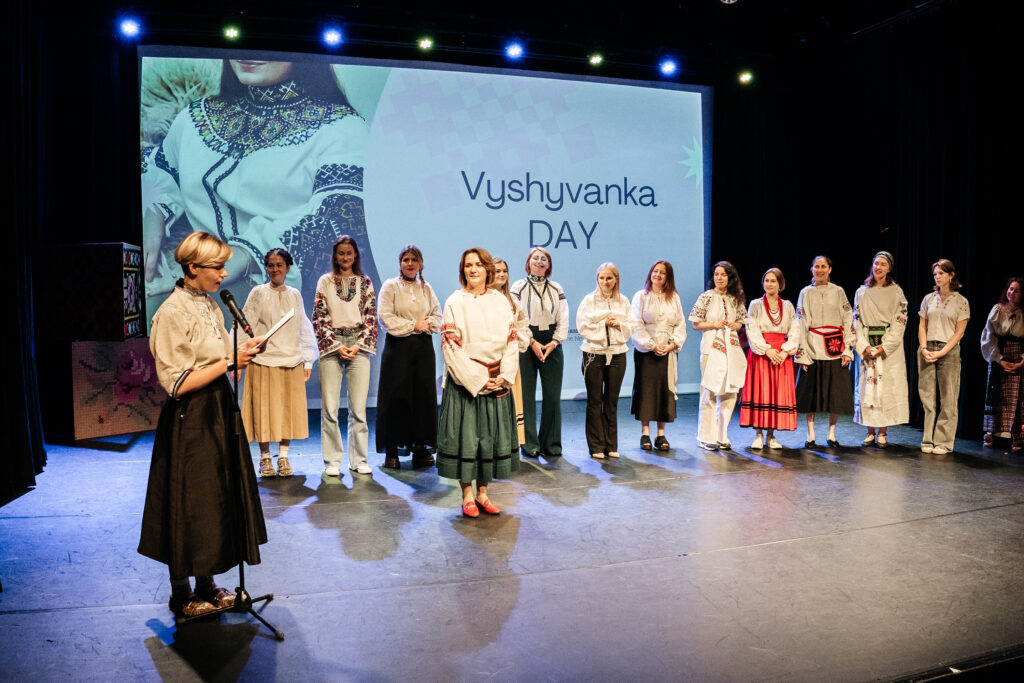
Олена (Амстердам)
My name is Olena, and I was born and raised in Kyiv – a city deeply rooted in my heart. In 2014, I moved to the Netherlands, but my soul has always remained with Ukraine.
Since childhood, I’ve felt proud to be Ukrainian, to carry the blood of my ancestors – strong, independent-spirited, and hospitable people. My parents instilled in me a deep love for Ukraine, and I grew up surrounded by Ukrainian songs, traditions, and rituals.
For me, the vyshyvanka is not just clothing – it’s a symbol of our identity, our memory, and a true talisman. I’ve dreamed of embroidering my own shirt since I was young, putting my soul into it and creating a connection with my roots.
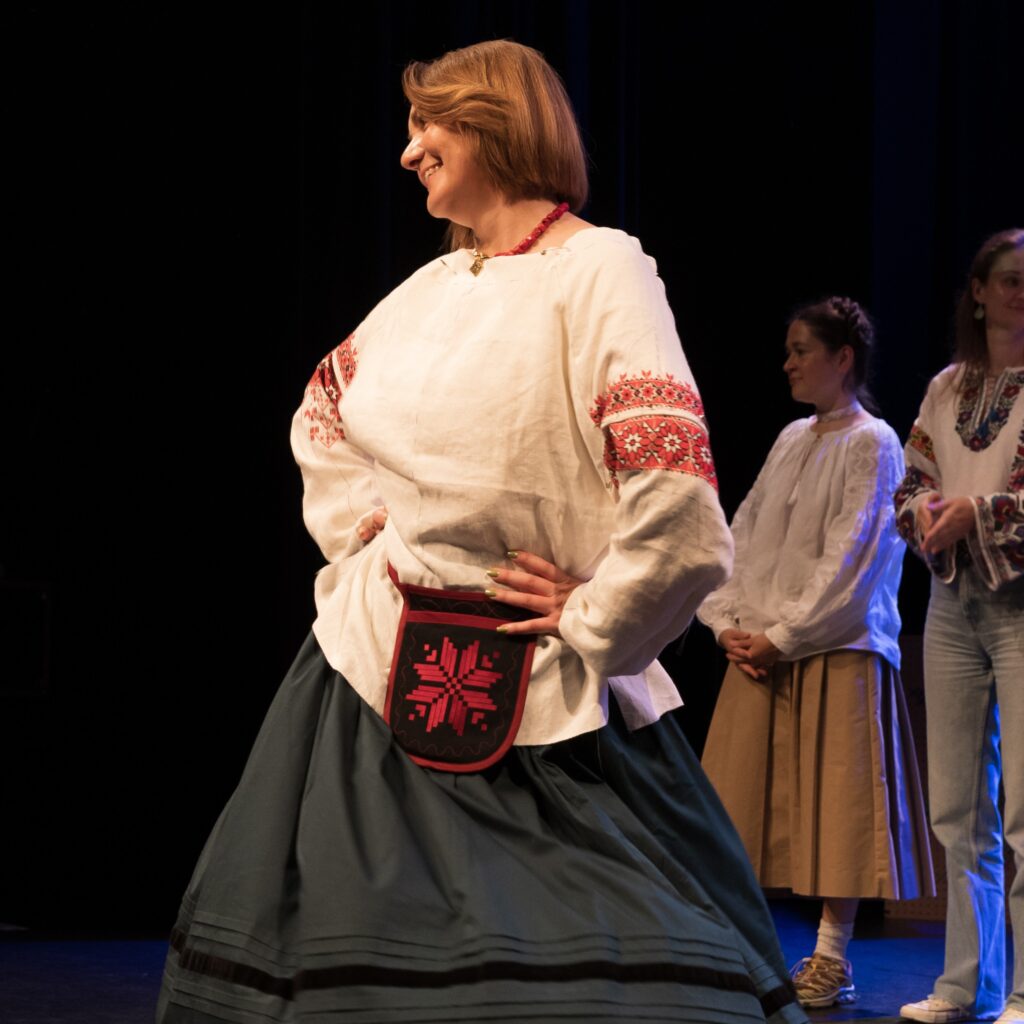
This process has become deeply emotional, as if I’m touching my own history, stitch by stitch. While embroidering, I feel like I’m speaking to those who came before me, continuing their story through thread and pattern. I chose a design from Kyiv Polissia – the region where I was born – because that is the place of my spiritual home.
This pattern feels familiar and deeply meaningful; it carries a unique energy that I want to preserve. I dream of passing this shirt down to my children or grandchildren as a symbol of love for our heritage. The vyshyvanka, to me, is the voice of a nation that endures despite war, sorrow, and separation. It’s my identity, woven into every stitch, color, and symbol. And now I feel truly happy, because I’m finally creating something I’ve long dreamed of with all my heart.
Катерина (Амстердам)
My name is Katia, I’m from Zhovti Vody, Dnipropetrovsk region. I’ve been living in the Netherlands for more than 10 years. Before this course, I had never embroidered, but in recent years I really wanted to have a handmade shirt with embroidery from my region.
That’s why I chose a shirt shown in the Honchar Museum in Kyiv as an example.
I thought to myself: I have to sew it as if, in 100 years, my shirt will be used as a model — just like I now look at shirts made a hundred years ago.
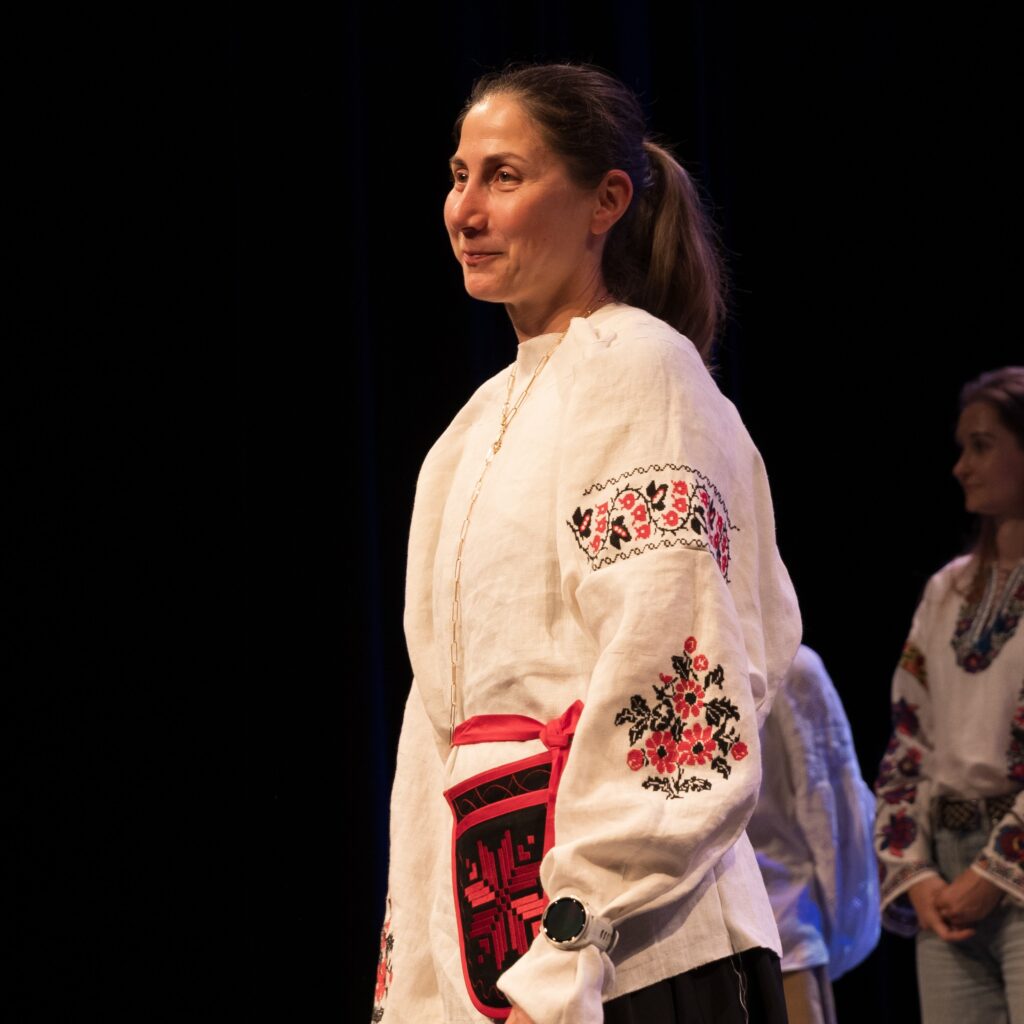
Well, no — not really. Sew the way your heart wants. The main thing is this feeling of “I can’t live without it, I have to at least hold the needle for a few minutes today.”
And that’s exactly what happened. My shirt isn’t finished yet, but it brings me so much joy!
Юлія Скочко (Амстердам)
Until March 2022, I lived with my family in Kyiv, but I’m originally from Donetsk.
With the start of the war, my long-time desire to embroider and create my own vyshyvanka grew stronger. I bought instructions on how to sew the shirt and learned about fabrics, but I couldn’t find a traditional embroidery pattern. There are very few examples left from my region, which was always heavily influenced by Soviet culture.
Thanks to the girls from the Vataha community, I finally started working on my shirt — but the embroidery design was still a problem.
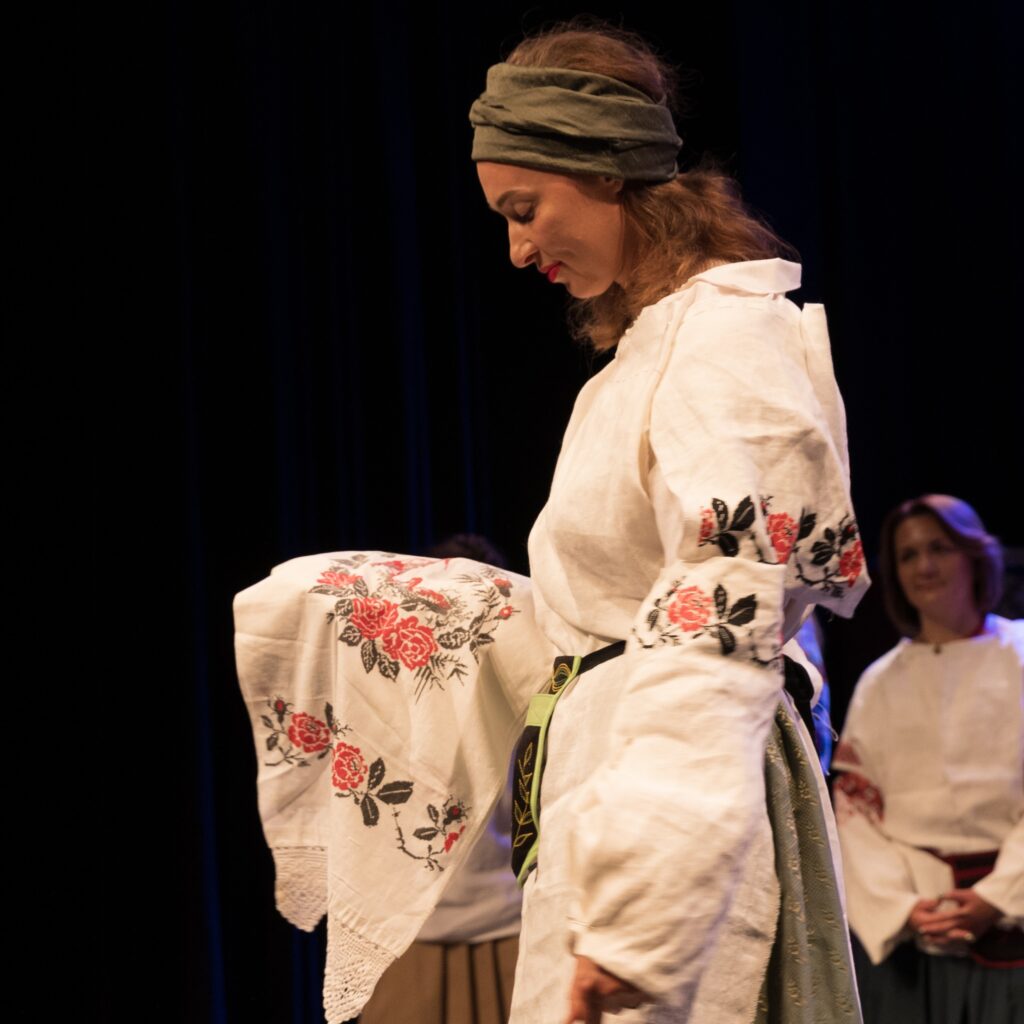
I couldn’t find anything that felt right. I wanted roses, something light and harmonious.
While others had already begun embroidering, I traveled to Kyiv during my children’s school holidays. While cleaning out a closet, I found a towel my grandmother had given me for my wedding. We didn’t have a good relationship back then, and I hadn’t appreciated embroidery at the time. I thought it was just some Soviet-style machine work.
But when I opened the bundle, I saw a real hand-embroidered wedding towel with roses.
I was moved to tears — it felt like a treasure that had been waiting for me all these years.
I took the main pattern from that towel and used it in my shirt. For me, it’s a gift and a reconciliation between generations. I’m deeply grateful to my grandmother — and now, I have my own vyshyvanka, with its own story.
Тетяна Бігус (Гаага)
My name is Tetiana Bihus, and I’m from Zaporizhzhia. I came to the Netherlands after the full-scale invasion of Ukraine. Back home, I had my own small business — I designed and produced embroidered shirts (vyshyvankas) using machine embroidery. It was my passion and my way to speak through the language of symbols and threads. After moving here, I felt the need to reconnect with my roots.
One day I saw a post about the My Own Vyshyvanka project by the VATAHA foundation — a workshop on hand-embroidering and hand-assembling a shirt. I knew I had to join. This was my first time trying real hand embroidery. It’s much slower than machine work, but much deeper and more meaningful. Stitch by stitch, you think about the person you’re making it for, about home, about yourself.
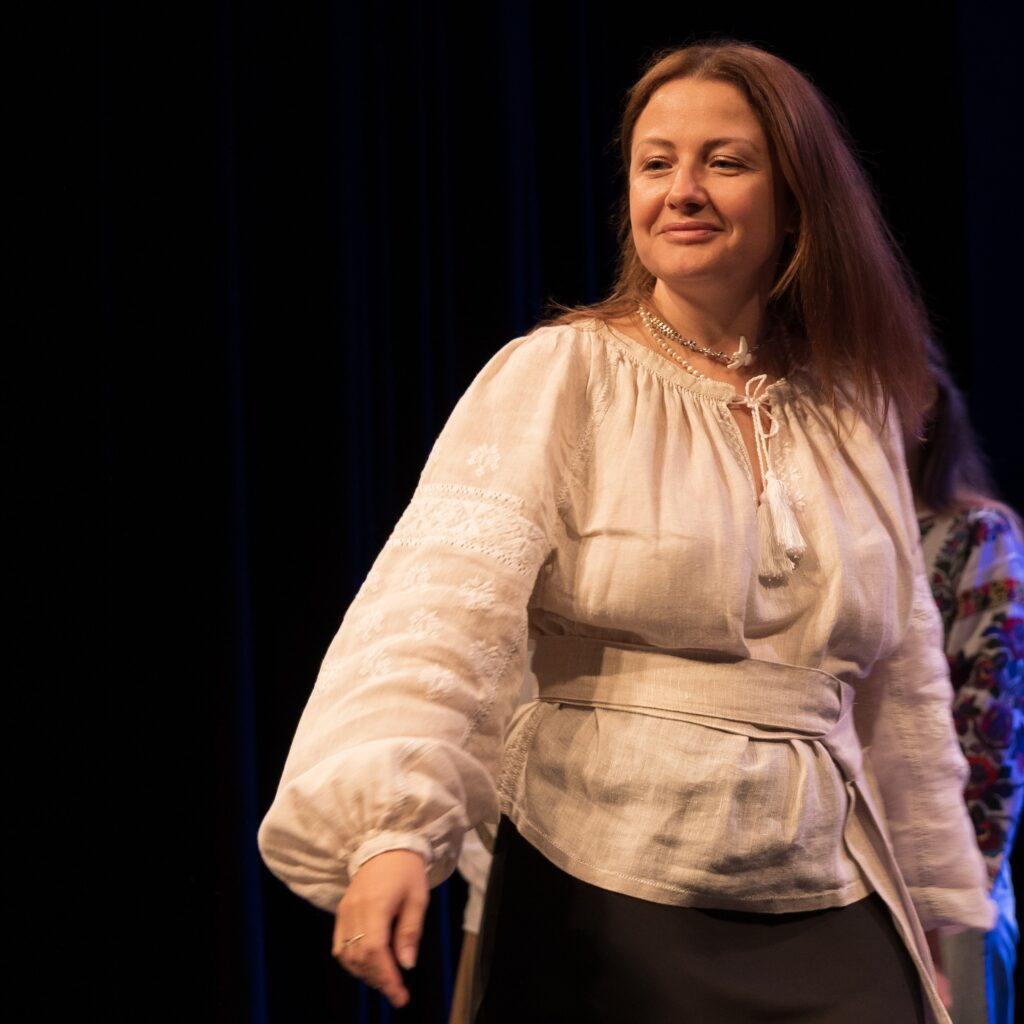
I made my vyshyvanka for my friend Khrystyna, who is also from Zaporizhzhia. We used a traditional pattern from Huliaipole, based on an original from the late 19th/early 20th century. Every stitch holds warmth, love, and friendship.
This project gave me so much inspiration. Embroidery is not just decoration — it’s a message. A way to say I remember. I care. I’m here. Thank you to VATAHA and our coordinator in The Hague, Olha Andriushchenko, for bringing us together and helping us create something so meaningful — even far from home.
Carolyn Edgerton (Гаага)
Hello to everyone. I’m Carolyn Edgerton, a Canadian living in the Netherlands since August 1994. Arts and crafts are an important reflection of Canadian culture, and so it was in the house I grew up in, where I was shown how to knit, sew and embroider by my mother and grandmother.
Ukraine and my Ukrainian friends and colleagues are also an important part of my life. I have been immeasurably enriched by working in Ukraine these last three years. In this project of making your own vyshyvsnka, it seems like these two loves come together. I chose a pattern from Chernihiv, simply because it seemed easy. Little did I know! But one sleeve is almost done and I imagine by Christmas I will be proudly wearing my completed vyshyvanka, and thinking about the next one!
Владислава (Гаага)
Hello, my name is Vladyslava, and I am a participant in the incredible My Own Vyshyvanka project. A vyshyvanka — an embroidered shirt — seems so simple, yet it holds deep meaning. It’s your identity, your roots, your nation. But it’s also hard — choosing the colors, the patterns, the style. I dreamed about making my own shirt for more than five years. I wanted something I could wear in everyday life. I kept searching for inspiration, and I never expected that the war would become the turning point.
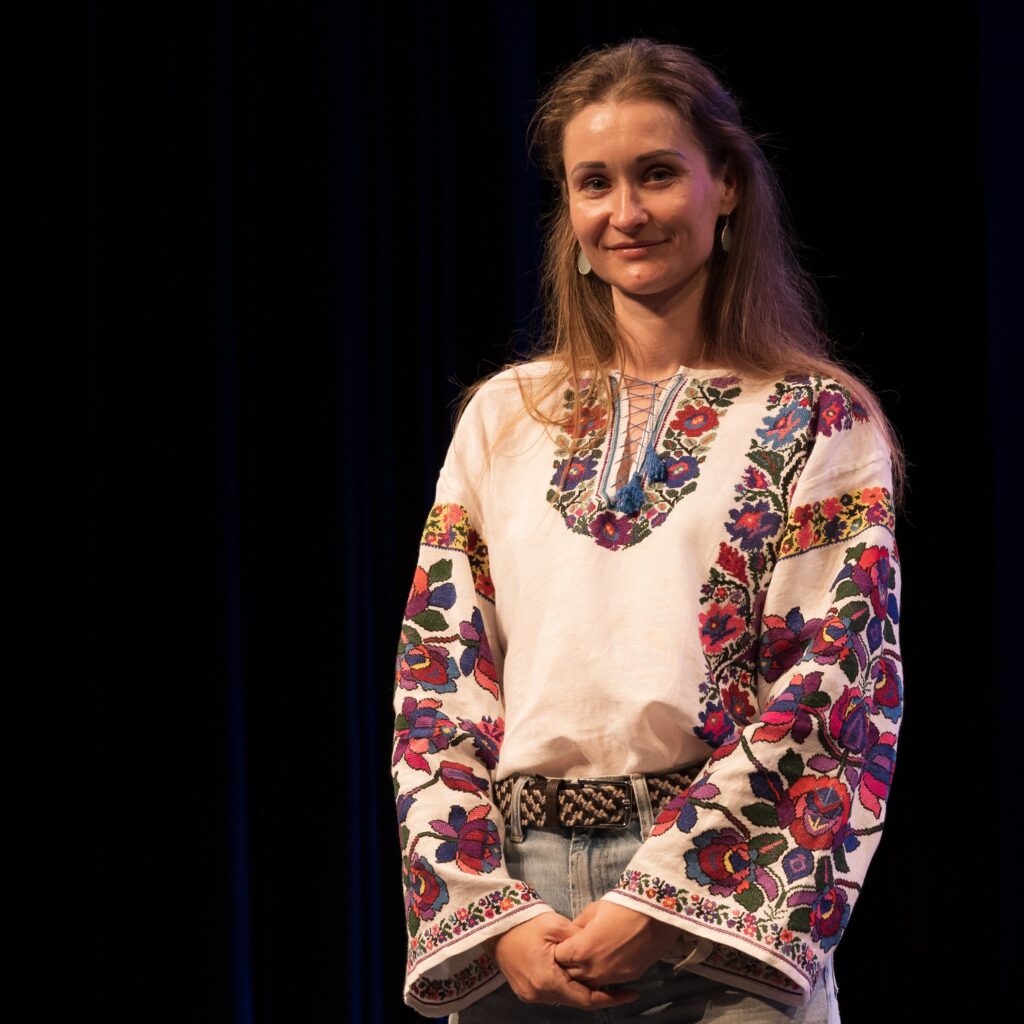
Now, more than ever, I want to show who I am. I want to show the world how strong and beautiful Ukrainians are — and how powerful our history is. When you wear a vyshyvanka, you carry responsibility. Because through it, the world sees you — a Ukrainian. I’m proud to have been born Ukrainian, and now I can also proudly show it through the shirt I created with my own hands.
Анастасія (Гаага)
My name is Nastya, and I’m from the Poltava region of Ukraine. By 2025, I still didn’t own a single Vyshyvanka, and I felt ashamed of that. I decided to change it — not in the easiest way, but by making one myself. My Vyshyvanka features white embroidery on grey linen, inspired by traditional patterns from my region. I chose white as a symbol of light, tenderness, and remembrance. The design includes rhombuses and stylized branches, representing paths and growth.
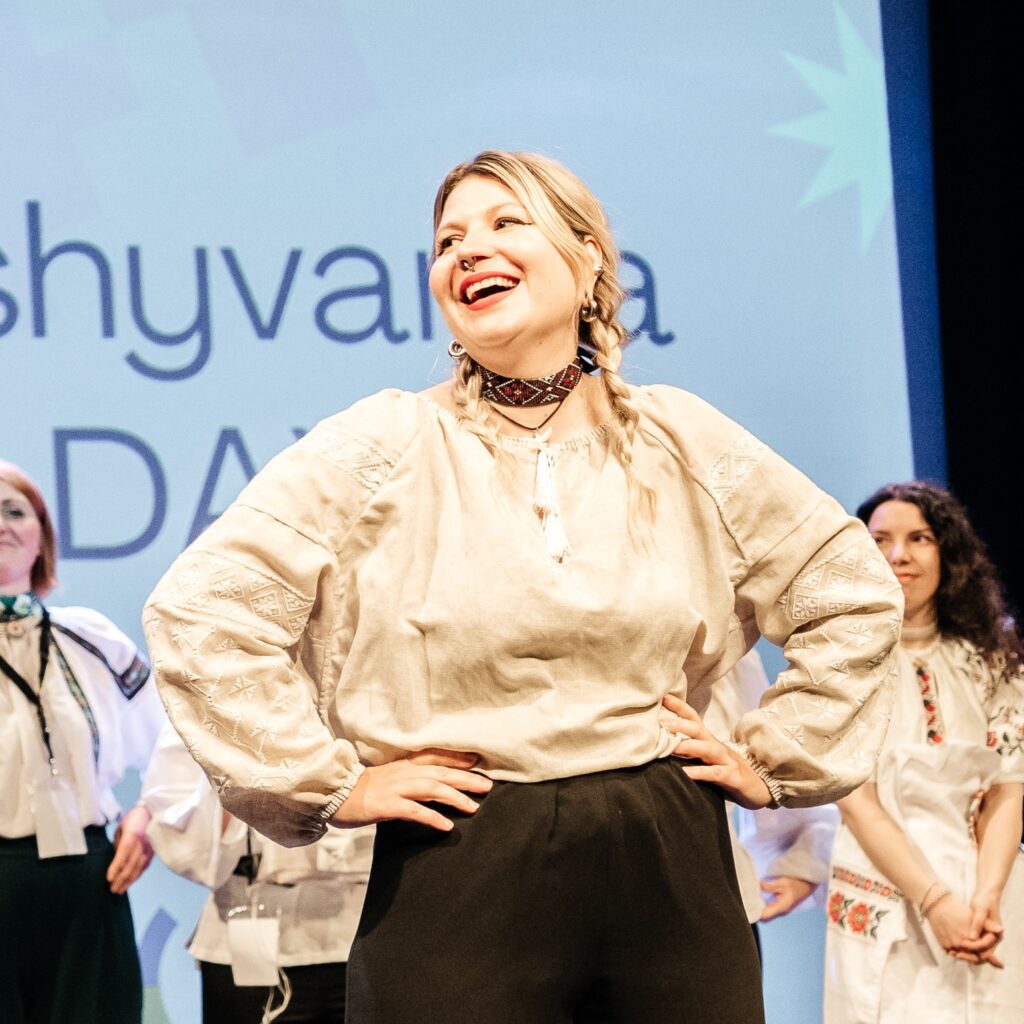
The process wasn’t easy — counted thread techniques required patience and focus. But each stitch brought calm and reminded me of who I am. Now I have my Vyshyvanka — and it carries much more than just fabric and thread.
Поліна (Гаага)
I’m Polina, originally from Dnipro city. After 8 years of living in the Netherlands, I finally decided to fulfill a long time dream of mine and embroider my own vyshyvanka. I knew right away that I wanted a Slobozhanshchyna-style one — in honor of my grandfather from the Kharkiv region, where many of my relatives still live. I really wanted to pay tribute to his memory, knowing how much he loved the place where he spent his childhood and youth.
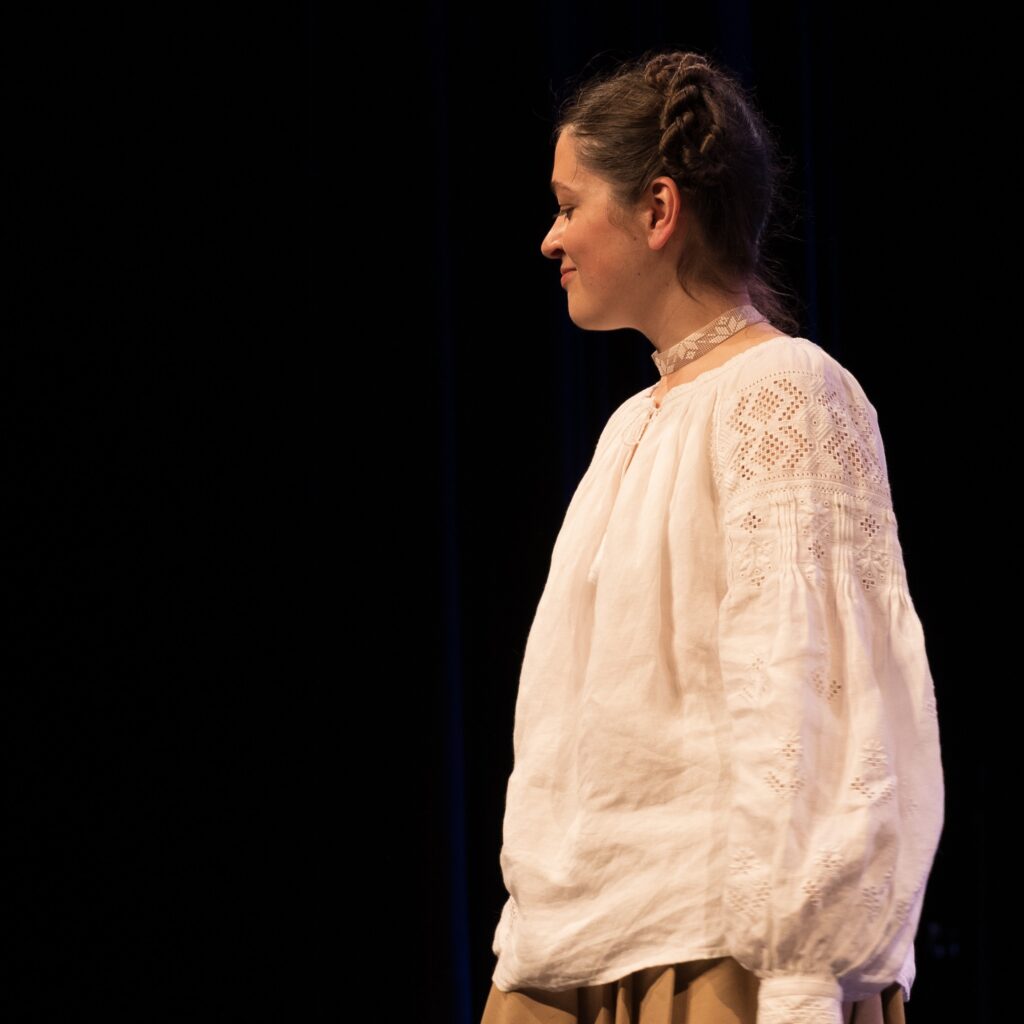
Unfortunately, not many authentic examples from this region have been preserved. After a long search on forums, I finally found a woman who had her grandmother’s original shirt from Kharkivshchyna — and even had a pattern for it, which she generously shared with me, free of charge. The pattern wasn’t very detailed, so I allowed myself to make some alterations and add a bit more details to make it mine.
It was truly an ambitious task — meticulous and full of questions. Around that time, I came across an announcement for a course on creating your own vyshyvanka , and I decided to join. Finally, nine months later, I have my own white-on-white Slobozhanshchyna shirt, made with my own hands — and I’m already preparing for the next one!
Анжела (Гаага)
My name is Angela, and I joined the My Own Vyshyvanka course thanks to my younger sister. She told me about the opportunity to create my own embroidered shirt from scratch — and I was immediately interested. Now I’m somewhere in the middle of the process.
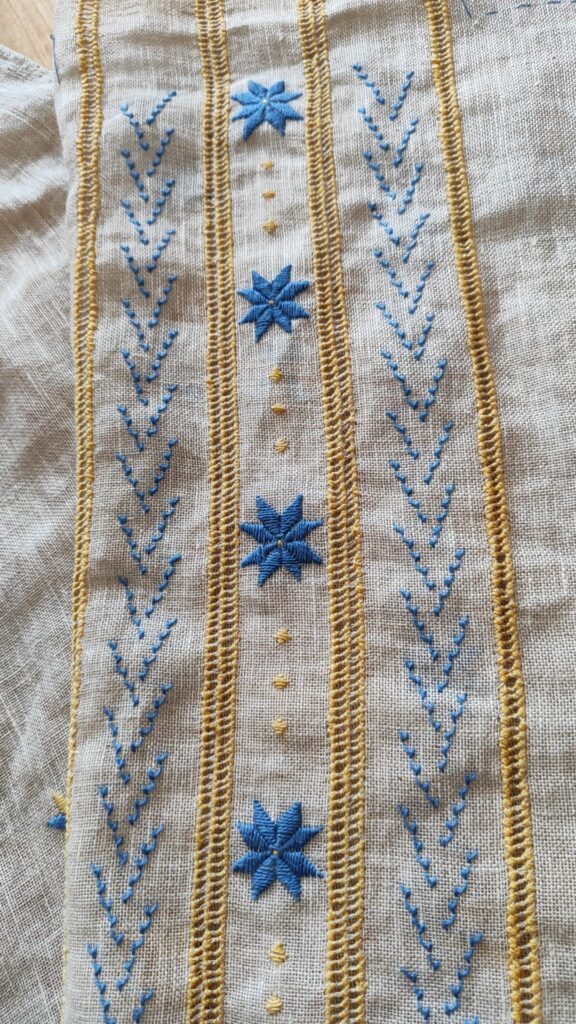
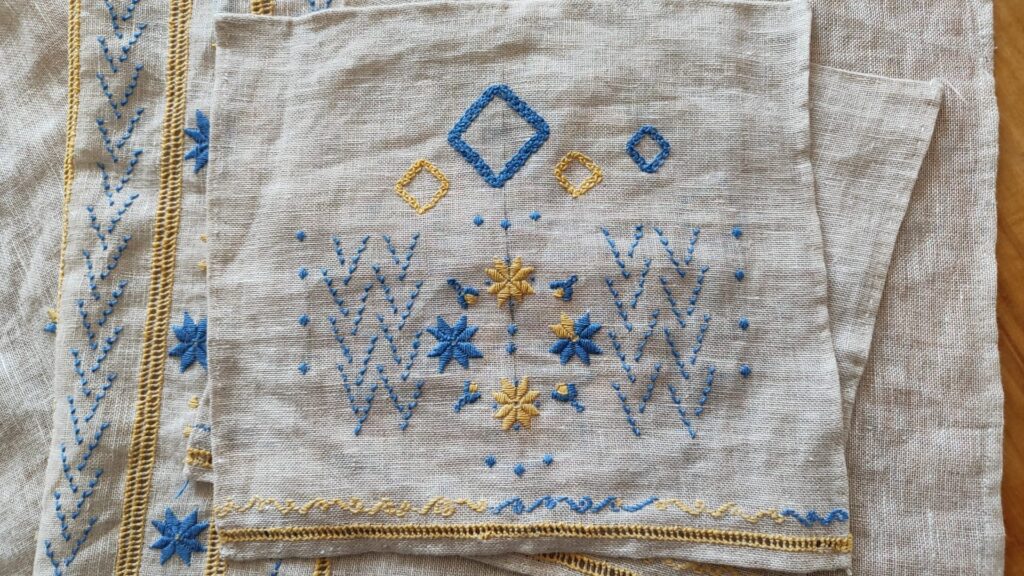
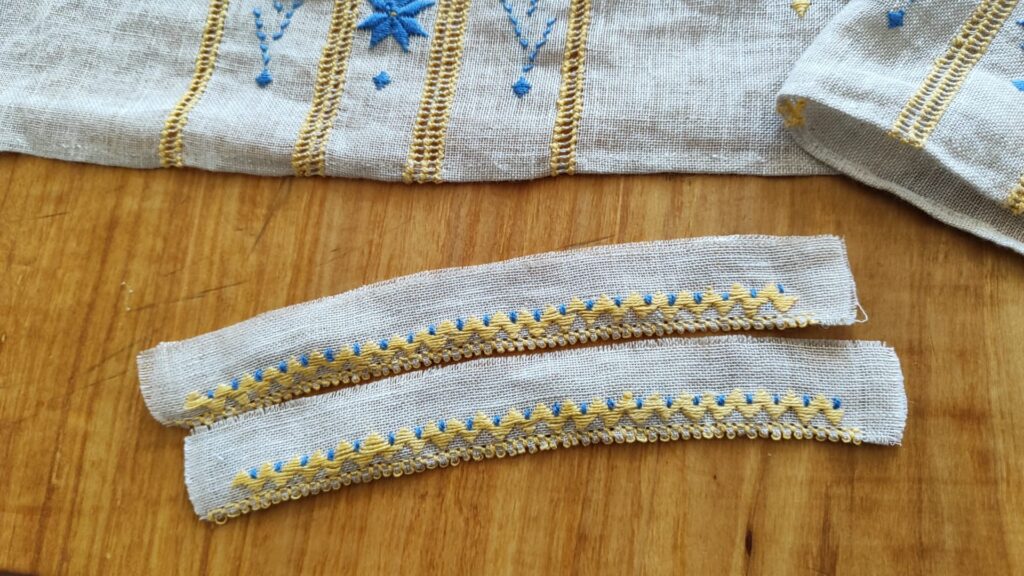
For me, this vyshyvanka is a creative journey. The hardest part was choosing a pattern — every village, every region of Ukraine has its own beautiful embroidery style.
That’s why I decided to design my own. It will be a unique vyshyvanka, one of a kind in the whole world.
Ольга (Роттердам)
I’m Olya, originally from the Lviv and Ivano-Frankivsk regions. I joined the course to finally fulfill a long-time dream — to make my own vyshyvanka. At first, I wanted to embroider a shirt from Sniatyn, because it’s close to my heart. But the technique is quite difficult for beginners. So I chose simpler stitches: prutyk with padding and zhyto.
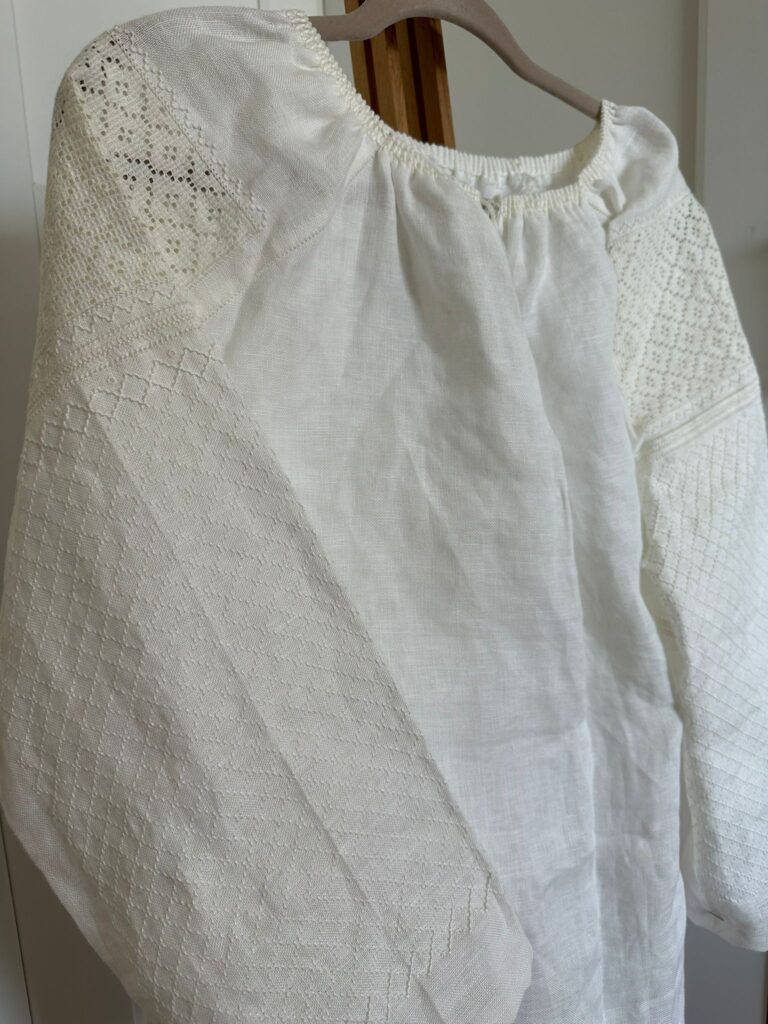
I’m happy with the process, although sewing all the parts together was a bit scary! I now realize that without the support I received during our meetings, I might not have finished it. Big thanks to Iryna Umanets for the inspiration — and to everyone who was there with me on this journey.
Sofiia (Роттердам)
My name is Sofiia, I’m 17 years old and I live in Dnipro. I was born in Kryvyi Rih, where my whole family currently lives. My ancestors were closely connected with the Cossacks, and one of my distant grandfathers was a Cossack. I wanted to include some elements from the Cossack era. Also, my grandmother really loves embroidery, especially white-on-white, because to us it looks truly magical. This connects me to my roots and to my family. ❤️
Поліна (Роттердам)
My name is Polina Konovalenko, I’m 17 years old. I was born and raised in Lubny, Poltava region. I’ve always loved making things with my hands, and embroidery was a dream of mine — but I never had the chance to try it until now. In my family, no traditional embroidered items were preserved — maybe because of difficult times or because their value wasn’t fully understood. We once had handmade shirts and towels, but unfortunately, nothing remains. That’s why it was really important for me to create something with my own hands — to feel this special connection.

I chose a traditional Poltava ornament, which is very meaningful to me. I made some small changes to the original design, adding my own taste and some modern elements.
The process was challenging but inspiring. I’ve always appreciated handmade things, but now, after making my own vyshyvanka, I value them even more.
Дарія (Роттердам)
Hi, my name is Daria. This is my first vyshyvanka, and starting it was quite difficult. I felt afraid of the blank fabric and didn’t know where to begin. But then I realized what piece of the puzzle I was missing — so I traveled to Ukraine for two weeks.
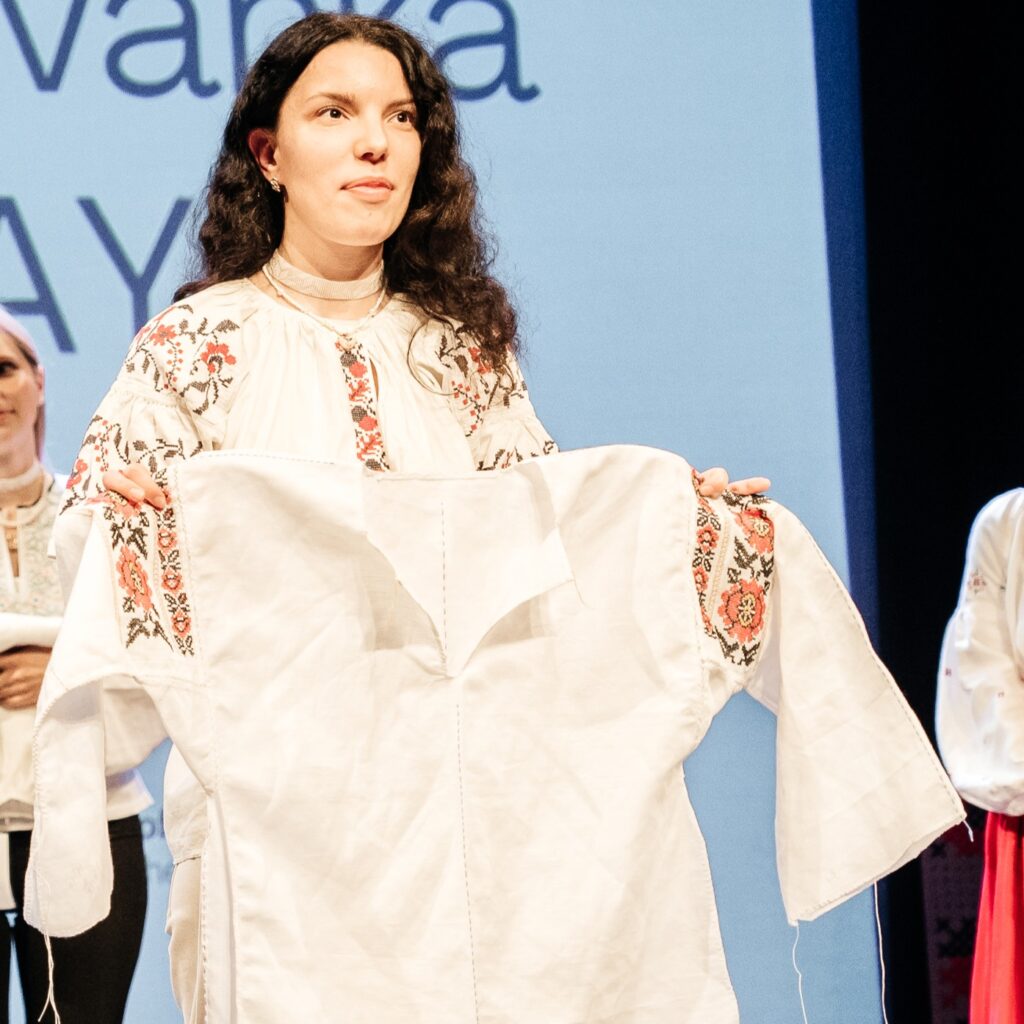
There, I finally began embroidering together with my grandmother. That’s why this shirt is not only a way to connect with my roots, my region, and my heritage — it’s also a very special connection with my family and my grandmother. This memory will stay with me forever, and I’m truly grateful to the VATAHA team and all the wonderful women around me who inspired me to create.